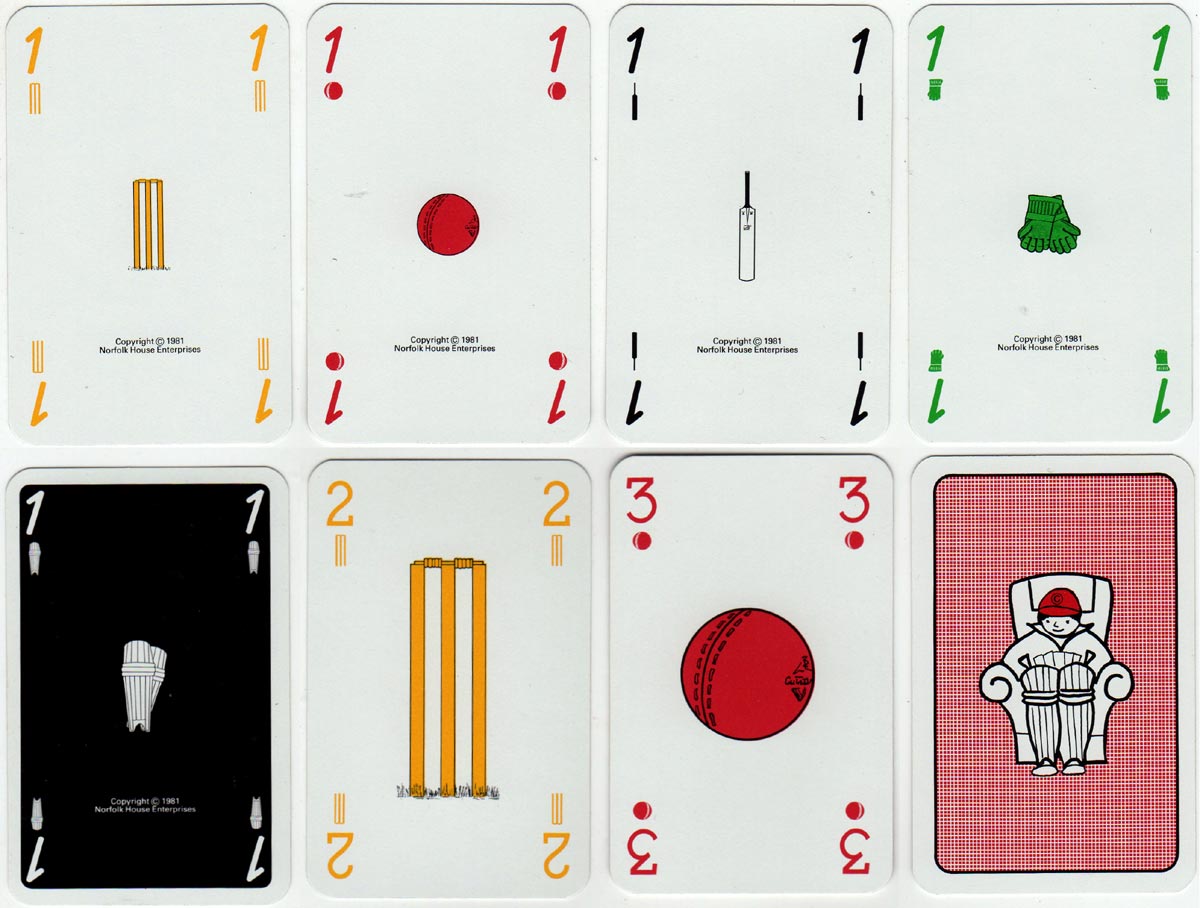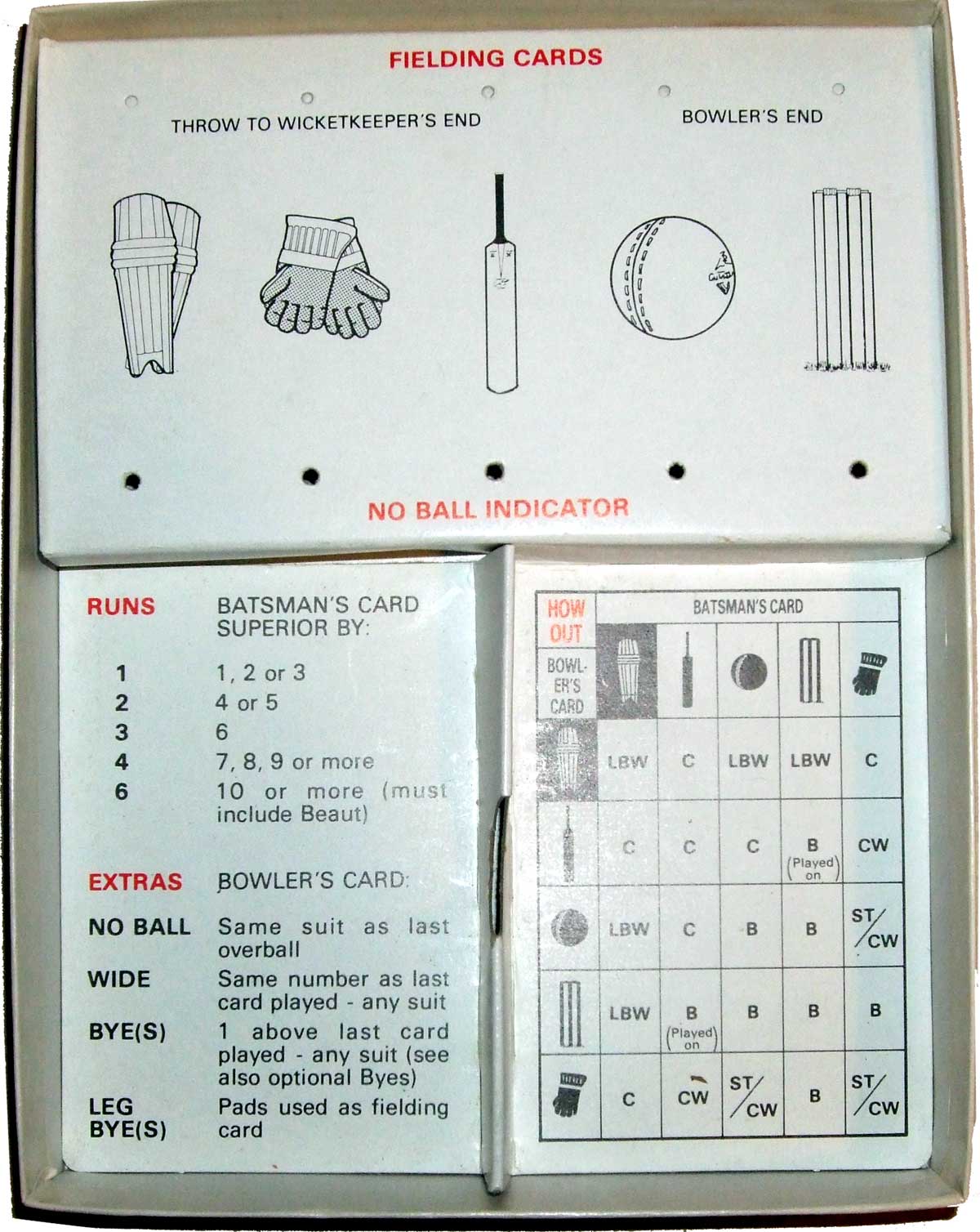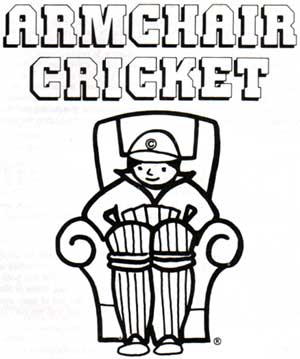Armchair Cricket
Armchair Cricket by ex-professional County Cricket player Don Arnold was first marketed by Norfolk House Enterprises in 1983.
Armchair Cricket was designed by ex-professional County Cricket player Don Arnold, and is a complex and somewhat comprehensive simulation of test match cricket. The game was first marketed by Norfolk House Enterprises in 1983 and consists of two identical packs of cards of five suits each, eleven cards per suit (total 55 cards per pack, 110 cards per game). The five suits are: Bat; Ball; Wicket; Pads and Keeper’s Gloves. Each card is numbered from 1 through to 11. See an overview►


Above: Armchair Cricket, designed by Don Arnold, was first marketed by Norfolk House Enterprises in 1983.
The game is played by two or four players. One player the bowler (fielding team) the other the batting team. In simple terms, the bowler selects a card from their hand, plays it and the batsman then selects a card to counter it. Depending upon the relationship between the two cards the batsman may score runs if the card he plays is of the same suit as that bowled and a higher numerical value, being out if the card played is of a different suit and lower numerical value to that bowled or, alternatively, no further action occurs (the ball may have beaten the batsman but missed the wicket, or the batsman may simply play a defensive shot which does not allow any runs).
The score sheets included are very comprehensive with space for the names of 11 batsmen in each team, who won the toss (got the choice of batting), how each batsman was out, their runs scored, the bowler, total etc., even including space for scores for different days, before lunch, before tea and for the day.
The game was recently revived by Gibsons Games in 1995 and is also sold by Cricket Direct, apparently under the name Quicket.

By Matt Probert
Member since March 02, 2012
I have adored playing cards since before I was seven years old, and was brought up on packs of Waddington's No 1. As a child I was fascinated by the pictures of the court cards.
Over the next fifty years I was seduced by the artwork in Piatnik's packs and became a collector of playing cards.
Seeking more information about various unidentified packs I discovered the World of Playing Cards website and became an enthusiastic contributor researching and documenting different packs of cards.
I describe my self as a playing card archaeologist, using detective work to identify and date obscure packs of cards discovered in old houses, flea markets and car boot sales.
Related Articles

ViVa Bourg
A distinctive deck of cards for a specific promotion.

Sumo Wrestling
Traditional Japanese Sumo Wrestling playing cards with photograph of different wrestler on each card...

Dancing
“Dancing” playing cards manufactured by Nintendo for Torii Dance School, Osaka.

Scientific Whist
“Scientific Whist” : standard cards with instructions for play on the faces by Chas Goodall & Son, 1...

Agent Provocateur
Branded lingerie collection in a pack of pin-up playing cards.

Nimbus playing cards
Mike Steer’s weather-themed pack with suits in four colours and backs for cardistry.

Agatha Christie and Playing Cards revisited
Agatha Christie uses card-play as a primary focus of a story, and as a way of creating plots and mot...

The Decadent Deck
Studies in the eroticism of the female body by Inge Clayton.

Historic Shakespeare
“Historic Shakespeare” playing cards featuring Shakespearean characters by Chas Goodall & Son.

Copechat Paramount Sorting System
Preserving the past: a specimen deck showcasing edge-notched cards and their ingenious sorting syste...

Heartsette by Herbert Fitch & Co, 1893
A glimpse into a busy print and design office in late Victorian London.

Rap Rummy
Rap Rummy made by Parker Brothers in 1926, only 4 years after the discovery of King Tutankhamen’s to...

Batman® playing cards
Batman playing cards published by InterCol of London 1989.

Can You Believe Your Eyes?
“Can You Believe Your Eyes?” playing cards featuring visual illusions & other oddities.

Pastime Playing Cards for the Blind
The “Pastime” Playing Cards for the Blind manufactured by Goodall & Son Limd., c.1910.

The European Interchanges Quartets
A card game based around motorway intersections from European countries.
Most Popular
Our top articles from the past 28 days


